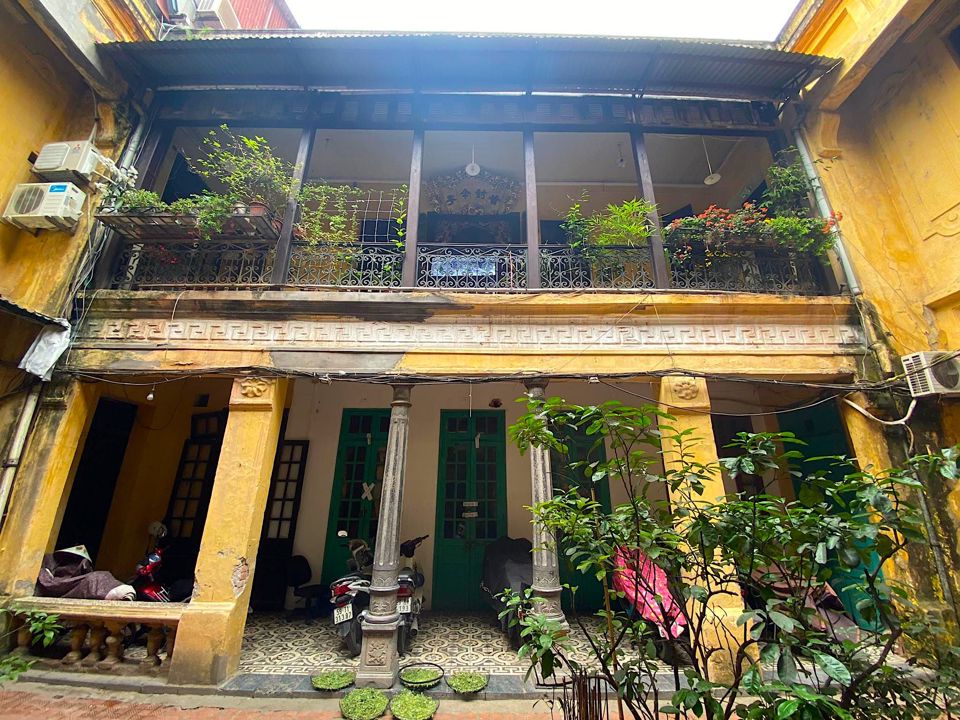
| An old villa in 44 Hang Be, Hanoi. Photo: Lai Tan/The Hanoi Times |
Architect Pham Hoang Phuong from the National Institute of Architecture emphasized that establishing architectural management regulations for the city is a vital and decisive factor in managing, preserving, and promoting the unique architectural and landscape values of the urban area.
"The approval of the Hanoi Architectural Management Regulations by the Hanoi People's Council during its 17th session signifies a critical advance towards realizing the city's vision in its new development phase," stated Phuong.
Nguyen Trong Ky Anh, Director of the Hanoi Department of Planning and Architecture, asserted that the regulations will address the shortcomings identified over the nine years of implementing the general planning and architectural management regulations.
He noted that these new regulations will meet state management requirements regarding construction, technical infrastructure, and social infrastructure and align with modern urban development trends.
Charged by the Hanoi People's Committee to develop the Hanoi Architectural Management Regulations, the Department of Planning and Architecture has basically completed the explanatory report and draft regulations and is currently seeking feedback from various agencies, organizations, individuals, and the community.
According to the draft, the regulations consist of 4 chapters, 17 articles, and 9 appendices. They include provisions for managing architecture in specific areas and streets; defining requirements for cultural identity in architecture; identifying areas needing separate urban designs, streets and areas prioritized for renovation, and areas with special management requirements.
| Deputies of the Hanoi People's Council approve the Regulation of architectural management of Hanoi. Photo: Pham Hung/The Hanoi Times |
In the assessment report on the regulations, the head of the Urban Committee of the Hanoi People's Council Dam Van Huan pointed out that the Hanoi Architectural Management Regulations need to make a clear distinction between architectural management and landscape architectural management. Another important task is to emphasize the preservation of land reserves for developing parks, green corridors, and urban green spaces.
In the resolution approving the Architectural Management Regulations, the Hanoi People's Council also emphasized the principle of architectural management in keeping with the Architecture Law and other relevant legal regulations, tailored to Vietnam's architectural development direction and the practical conditions in the capital city. It is also consistent with the general planning orientations and zoning plans authorized, as well as current standards and criteria.
Through these measures, it aims to promote socio-economic development, economic restructuring, labor improvement, income enhancement, and the material and spiritual life of the people. It aims to build developed and civilized areas, preserve cultural identities, and narrow the gap between urban and rural areas. This contributes to the construction of an advanced, modern architectural landscape deeply rooted in the national cultural heritage.
"Architectural management needs to consider the characteristics and peculiarities of each area, customs, traditions, and cultural heritage. Construction projects must be tightly managed and coherent in terms of architecture and landscape, ensuring efficient functionality, aesthetics, safety, and harmony with the surrounding context. For areas suitable for high-rise construction, specific regulations should be formulated with special management requirements or urban design approved by competent authorities," emphasized the resolution of the Hanoi People's Council.






- Hanoi Tourism: Paving the way for sustainable development
- Hanoi leads Vietnam's Provincial Innovation Index for 2024
- Year-end blues: The pressure we all feel
- Hanoi Agricultural Products and Craft Village Festival projects Vietnamese goods wider
- Hoa Lac Hi-tech Park to soon launch AI sandbox model
- Hanoi and Australian localities will strengthen ties: Ambassador


